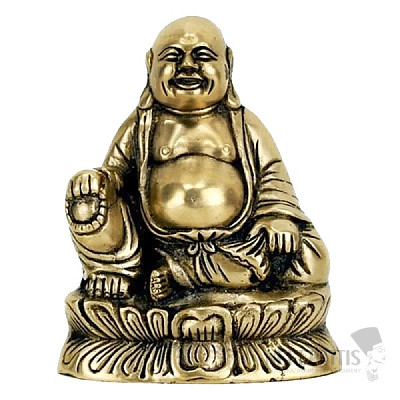Buddha for happiness and prosperity Pu Thai Ho Shang
Buddha for happiness and prosperity Pu Thai Ho Shang
Beautiful statuette of the Laughing Buddha for happiness and prosperity Pu Thai Ho Shang. Symbolism: The Laughing Buddha is a symbol of happiness, wealth and prosperity. The statuette is made of polyresin, a durable… more »
Buy and get shipping for 5 €
view shipping options
| Parcel service DE [EN] | 5.50 € | |
| Parcel service LT [EN] | 7.40 € | |
| Parcel service LU [EN] | 5.60 € | |
| Parcel service LV [EN] | 7.40 € | |
| Parcel service NL [EN] | 5.80 € | |
| Parcel service PL [EN] | 5 € | |
| Parcel service PT [EN] | 10.60 € | |
| Parcel service RO [EN] | 7.30 € | |
| Parcel service SE [EN] | 9.30 € | |
| Parcel service SI [EN] | 7.50 € | |
| Parcel service IT [EN] | 9.10 € | |
| Parcel service IE [EN] | 12.60 € | |
| Parcel service AT [EN] | 5.50 € | |
| Parcel service BE [EN] | 5.80 € | |
| Parcel service BG [EN] | 13 € | |
| Parcel service EE [EN] | 7.50 € | |
| Parcel service ES [EN] | 10.40 € | |
| Parcel service FI [EN] | 12.70 € | |
| Parcel service FR [EN] | 8.90 € | |
| Parcel service HR [EN] | 6 € | |
| Parcel service HU [EN] | 5.10 € | |
| Parcel service DK [EN] | 5.90 € |
Watchdog
Buddha for happiness and prosperity Pu Thai Ho Shang
Beautiful statuette of the Laughing Buddha for happiness and prosperity Pu Thai Ho Shang. Symbolism: The Laughing Buddha is a symbol of happiness, wealth and prosperity. The statuette is made of polyresin, a durable resin. Material: brass. Height approx. 13 cm, weight approx. 860 g. Illustrative illustration.
Laughing Buddha = happiness, joy, success, prosperity and happiness. It is a symbol of kindness and innocent joy, it is supposed to bring health and well-being. He used to be the patron saint of Chinese goldsmiths. His round belly is considered a physical image of happiness and wealth. It is recommended to stroke the abdomen once a day to increase the chances of happiness.
Buddha for happiness and prosperity. Ho Tai, as it is called in Chinese, is often confused with historical Buddha. Ho Tai is not a Buddha, but a revered Chinese monk. Ho Tai was famous for his Buddhist sermons and a bag full of presents he brought to children to reward them for learning about the Dharma. Behind this strange figure of Buddhism is a real historical figure. This is a Chinese Buddhist monk Chci Chi, Japanese Keishi. This Bodhisattva is known by the nickname Putaj (Pu-taj), which he obtained from a canvas bag with which he traveled throughout the country. So in China it is known as Pu-tai or Budai, in Japan Hotei or Hotai and in Vietnam as Bo Dai.
Ho Tai is often depicted in various forms, either with his hands over his head facing the sky, or he often holds a bag or has it over his shoulder. But no matter what he is portrayed with, he always has a happy, laughing face.
The Happy Buddha is often (but not always) depicted with one or more of the following characteristics:
1. big belly
2. bald head
3rd coat revealing chest
4. A wide distinctive smile
5. big bag
6th bowl, a traditional symbol that signifies wealth in Buddhism.
Ho Tai is a symbol of joy, happiness, prosperity and wealth. Therefore, it should not be missing in any home or office.
Where to place the statue in the interior?
The Buddha in Feng Shui is a symbol of happiness, wisdom, enlightenment, abundance, prosperity and brings positive energy.
It is generally recommended to place the statue at least a few inches from the ground, opposite the front door. The statuette is supposed to drive away the negative energy penetrating the house. It is necessary to treat the Buddha with respect. By stroking the Buddha's belly, you will support his purpose, which is to increase positive energy, fulfill desires and desires, still be in a good mood and drive away bad luck.
Do you want to enhance the beneficial effect of the Buddha statue on your home? Remember to smoke the Buddha regularly using incense sticks: incense sticks


